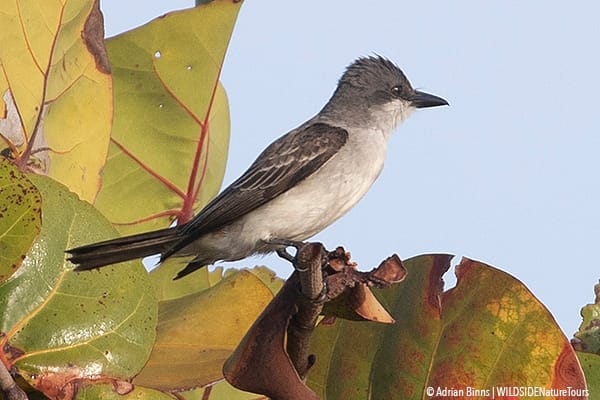TRIP REPORT: DRY TORTUGAS 2022 Seabirds & Spring Migration

TOUR FOCUS
TRIP LEADERS
Sorry, we couldn't find any posts. Please try a different search.
PRIVATE TOUR OPTION
This tour is available as a private trip for any size group. The tour cost will vary with the number of people and any custom requests.
TESTIMONIALS
After and absence of 2 years it was wonderful to get back to the Dry Tortugas. Departing Key West we had calm seas and pleasant weather along with excellent views of Bridled Terns sitting on jetsam; Pomarine Jaegers, including one that kept catching up to our boat; Sandwich and Roseate Terns resting on a shoal marker, as well as Atlantic Bottle-nosed Dolphins and many Flying Fish in the Gulf Stream.

Pomarine Jaeger
Once within the Dry Tortugas National Park boundary we slowed down at Hospital Key (one of the seven keys that make up the Dry Tortugas) to watch about a hundred Masked Boobies including some with chicks resting on the small coral strip. A few Brown Boobies were amongst them which was the first time that I had seen them on that key.

Masked Boobies on Hospital Key
Arriving at Garden Key, we had the remainder of that afternoon and all day the next day to bird the grounds in and around historic Fort Jefferson. We enjoyed wonderful views of hundreds of Brown Noddies perched on the north coaling docks. Amongst them we found the Black Noddy that everyone was keen to see! Nearby on Bush Key we could see Sooty Terns nesting on the ground and Brown Noddies on nests in the bushes, and enjoyed the spectacle of them swirling around the island. A dingy ride towards Long Key allowed for close viewing of the Magnificent Frigatebird colony with many males displaying their red ballon gorget.

Black Noddy
Though April is peak time for passerine migration, it really depends on fronts from the north or west to have a chance of a good fallout. With steady winds out of the east during our visit we had 9 warbler species, including Northern Parula, Palm, Common Yellowthroat, Blackpoll all of whom made frequent visits to the fountain – the only source of freshwater on the island for them!

Northern Parula
Other passerines included Catbirds, Yellow-billed Cuckoo, several Gray Kingbirds and Black-whiskered Vireo, the latter two Caribbean species that return each spring to breed in Southern Florida. We also had, a good showing of falcons – Merlin, American Kestrel and Peregrine, that could be seen patrolling the parade grounds and pursuing migrants.

Gray Kingbird

Merlin
The return journey to Key West tends to quieter bird wise as we take more of an inland route, however we did get good views of Brown Boobies, some perched on the buoys and markers as we exited the park, and others foraging out at sea.

Brown Booby


